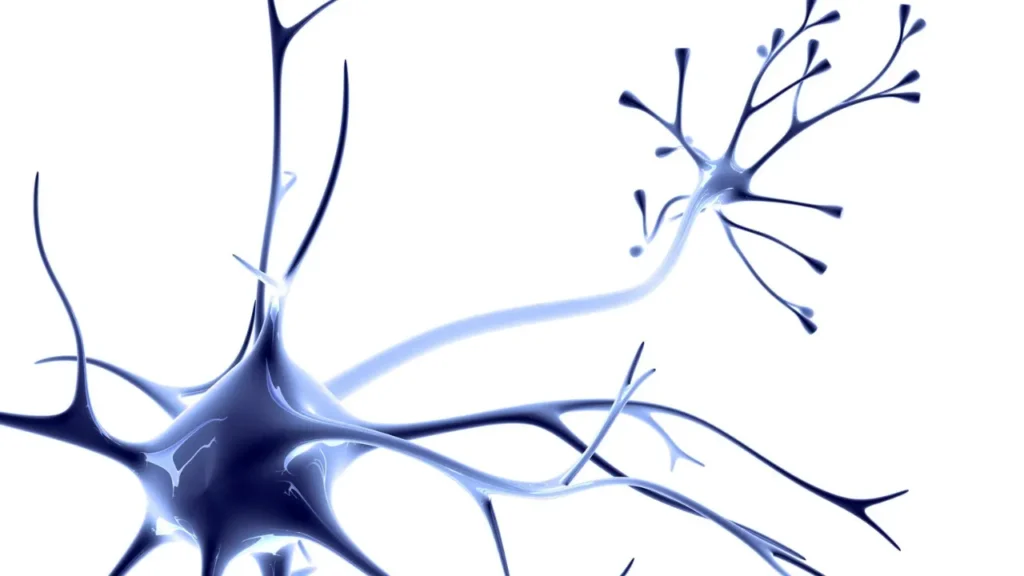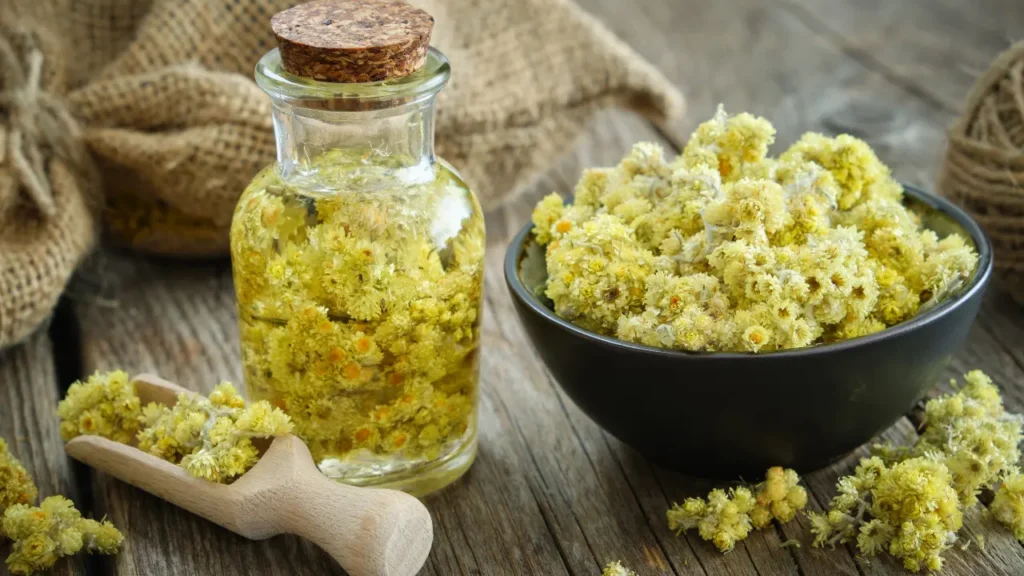Helichrysum arenarium, the scientific name for Sandy Everlasting, is a member of the Asteraceae family of daisies. It is well known for both its vivid yellow blooms and its extensive usage in traditional Asian and European medicine. The purpose of this article is to examine Sandy Everlasting’s characteristics, health advantages, recommended dosage, adverse effects, possible drug interactions, and responsible usage of this supplement. We also explore Sandy Everlasting’s chemistry and the physiological processes that underlie its effects on the body and brain.
You May Also Like:
Levium Premium Liquid Fast-Acting Natural Stress Relief Supplement: In-Depth Review
ANTINEOPLASTONS: Benefits, Dosage, Side Effects, Drug Interactions, And Other Important Information
Sandy Everlasting: Benefits, Dosage, Side Effects, Drug Interactions, and Other Important Information is an original (NootropicsPlanet) article.
The Nature of Sandy Everlasting
Sandy Everlasting gets its name from the fact that it is a perennial herb that grows best on sandy, arid soils. The plant is distinguished by clusters of tiny, brilliant yellow flowers, a hairy stem, and short leaves. It is thought that the bioactive substances found in Sandy Everlasting, such as terpenoids, phytosterols, phenolic acids, and flavonoids, are responsible for some of its medicinal properties.
Health Benefits of Sandy Everlasting
Sandy Everlasting (Helichrysum arenarium) has been traditionally valued for its range of health benefits, affecting both the brain and body. The plant’s unique composition of bioactive compounds plays a pivotal role in delivering these benefits, which span from cognitive enhancement to overall well-being.
- Enhanced Cognitive Functions: Sandy Everlasting has been associated with improved cognitive functions, such as better memory recall, increased focus, and enhanced alertness. The flavonoids and phenolic acids in the plant contribute to these effects by modulating neurotransmitter activity, particularly affecting dopamine and acetylcholine, which are crucial for learning, memory, and attention.
- Neuroprotection: The antioxidative compounds in Sandy Everlasting, including various flavonoids, help protect neurons against oxidative stress and damage. This oxidative stress is a contributing factor to the development of neurodegenerative diseases like Alzheimer’s and Parkinson’s disease. By neutralizing free radicals, Sandy Everlasting may reduce the risk or delay the onset of these conditions.
- Stress Reduction: The adaptogenic properties of Sandy Everlasting can help the body manage stress more effectively. By modulating the stress response, this herb may help reduce the physical and mental effects of stress, contributing to a sense of well-being and potentially lowering the risk of stress-related cognitive decline.

Chemistry of Sandy Everlasting
Sandy Everlasting (Helichrysum arenarium) is rich in a complex array of bioactive compounds that contribute to its therapeutic properties. As mentioned, the primary classes of these compounds include flavonoids, phenolic acids, phytosterols, and terpenoids, each playing a distinct role in the plant’s nootropic effects.
- Flavonoids: The flavonoid class includes compounds such as apigenin, naringenin, and quercetin. Flavonoids are known for their potent antioxidant activity, which helps in scavenging free radicals, hence protecting neuronal cells from damage and improving cognitive functions.
- Phenolic Acids: Phenolic acids like caffeic acid and chlorogenic acid have been shown to influence neurotransmission. They can modulate the activity of neurotransmitters such as dopamine and acetylcholine, which are essential for memory, attention, and learning processes.
- Phytosterols: Phytosterols are structurally similar to cholesterol and are known for their anti-inflammatory properties. By reducing inflammation, phytosterols may help in preventing neuroinflammation-related cognitive decline.
- Terpenoids: Terpenoids, including the sesquiterpene lactones found in Sandy Everlasting, possess anti-inflammatory and neuroprotective effects. They may also contribute to the plant’s therapeutic efficacy by modulating the immune response in the brain.
The synergy between these compounds enhances Sandy Everlasting’s efficacy as a nootropic supplement, providing a multifaceted approach to cognitive enhancement and neuroprotection.
Physiological Mechanism of Action of Sandy Everlasting
The physiological mechanisms through which Sandy Everlasting exerts its effects involve multiple pathways which involve neuroprotection, neurotransmission, and anti-inflammation.
- Antioxidative Neuroprotection: The flavonoids and phenolic acids in Sandy Everlasting reduce oxidative stress and protect neurons from oxidative damage. This is crucial for maintaining cognitive functions and preventing neurodegenerative diseases.
- Neurotransmitter Modulation: Sandy Everlasting’s phenolic acids interact with neurotransmitter systems, particularly enhancing the activity of dopamine and acetylcholine.
- Anti-inflammatory Effects: Both phytosterols and terpenoids contribute to the anti-inflammatory properties of Sandy Everlasting. By mitigating inflammation in the brain, these compounds help to preserve cognitive functions and reduce the risk of inflammation-related cognitive decline.
- Neuroimmune Regulation: Terpenoids in Sandy Everlasting offer neuroprotection by modulating immune cell activity in the central nervous system. A healthy neuronal environment is conducive to optimal cognitive function.


Optimal Dosage of Sandy Everlasting
The right dosage of Sandy Everlasting for nootropic effects depends on a lot of factors, such as sensitivity, age, and health. Finding a widely acknowledged dosage for Sandy Everlasting is difficult due to the lack of clinical studies on the subject. Nonetheless, dosages of 400–600 mg of dry herb extract per day may be helpful for enhancing cognitive function, according to common use and preliminary research. Starting with a lower dose and increasing it gradually is essential to find your tolerance. But, it is best to ask for medical advice to prevent undesirable side effects.
Side Effects of Sandy Everlasting
Sandy Everlasting is generally regarded as safe when consumed in moderation. However, some people could have adverse consequences like headaches, allergic reactions, or gastrointestinal distress. It is best to utilize Sandy Everlasting sporadically as opposed to consistently for lengthy periods due to a lack of evidence-based safety data.
Potential Substance Interactions with Sandy Everlasting
Sandy Everlasting may interact with drugs that impact the central nervous system, such as antidepressants, antipsychotics, and Alzheimer’s disease treatments, due to its influence on neurotransmitter systems. Furthermore, its anti-inflammatory qualities might potentially interact with blood thinners and non-steroidal anti-inflammatory medicines (NSAIDs), changing their effects. It is imperative that you speak with a doctor before taking Sandy Everlasting along with any other drug.


Best Responsible Use of Sandy Everlasting
To ensure the best responsible use of Sandy Everlasting as a nootropic supplement, you should consider the following guidelines:
- Start with a low dose and gradually increase to assess tolerance.
- Monitor for any side effects or adverse reactions.
- Avoid long-term continuous use; consider taking breaks to prevent potential tolerance or dependence.
- Consult with a healthcare provider before use, especially if you have pre-existing medical conditions or those taking other medications.
Sandy Everlasting:
Conclusion
In summary, the plant known as Sandy Everlasting has vivid yellow blooms, and its usage dates back to traditional Asian and European medicine. Sandy Everlasting is recently known for its effect on cognitive functions, neuroprotection, and stress reduction. The active compounds of the plant have been associated with improving memory recall, better focus, and awareness. This is because the phenolic acids and flavonoids of Sandy Everlasting can modulate neurotransmitter activity which is crucial for learning and memory.
However, more scientific research is needed to back up the efficacy and safety of Sandy Everlasting supplements. You should be cautious and aware of the side effects and potential interactions to ensure your safety and well-being. It is advised for you to consult your healthcare professional to determine your suitability for this supplement.


References:
- Sandy Everlasting – Uses, Side Effects, and More. Retrieved from: https://www.webmd.com/vitamins/ai/ingredientmono-505/sandy-everlasting
- A Comparative Study of the Antioxidative Effects of Helichrysum italicum and Helichrysum arenarium Infusions. Retrieved from: https://www.ncbi.nlm.nih.gov/pmc/articles/PMC7998896/
- Sandy Everlasting (Helichrysum arenarium (L.) Moench): Botanical, Chemical and Biological Properties. Retrieved from: https://www.ncbi.nlm.nih.gov/pmc/articles/PMC6090377/
Important Note: The information contained in this article is for general informational purposes only, and should not be construed as health or medical advice, nor is it intended to diagnose, prevent, treat, or cure any disease or health condition. Before embarking on any diet, fitness regimen, or program of nutritional supplementation, it is advisable to consult your healthcare professional in order to determine its safety and probable efficacy in terms of your individual state of health.
Regarding Nutritional Supplements Or Other Non-Prescription Health Products: If any nutritional supplements or other non-prescription health products are mentioned in the foregoing article, any claims or statements made about them have not been evaluated by the U.S. Food and Drug Administration, and such nutritional supplements or other health products are not intended to diagnose, treat, cure, or prevent any disease.
